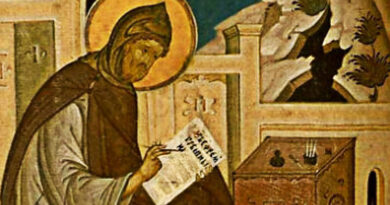Saints Peter and Paul: Pillars of the Early Church
•Apostles •Feast day: June 29 •+64
Saints Peter and Paul are two of the most prominent figures in Christianity, often regarded as the foundational pillars of the early Church. Their lives and missions, though distinct, converged in Rome, where they ultimately faced martyrdom and left an indelible legacy.
St. Peter: The Rock
St. Peter, originally named Simon, was a fisherman from Bethsaida in Galilee. His journey from a humble fisherman to the “Prince of the Apostles” is a testament to his unwavering faith and dedication. Upon meeting Jesus, Peter was called to leave his former life and follow Him, a call he answered without hesitation (Mark 1:17).
At Caesarea Philippi, Jesus bestowed upon Simon a new name, Peter, meaning “The Rock.” This moment was pivotal, as Jesus declared, “You are Peter, and upon this rock I will build my Church, and the gates of Hell shall not prevail against it” (Matthew 16:18). Despite his pivotal role, Peter experienced moments of human frailty, notably denying Jesus three times during the Passion. However, following Jesus’ resurrection, Peter reaffirmed his love and commitment to Christ, solidifying his role as the leader of the apostles (John 21:15).
Peter’s leadership was evident after the Ascension of Jesus. He directed the election of Matthias to replace Judas and boldly proclaimed Jesus as the Messiah. His ministry was marked by miraculous acts, such as healing a man crippled from birth (Acts 3:5) and facilitating the coming of the Holy Spirit in the house of Cornelius (Acts 10:44). After the Council of Jerusalem in 49 AD, Peter traveled to Rome to preach the Gospel. During Nero’s persecution in 64 AD, Peter was martyred by crucifixion, choosing to be crucified upside down on Vatican Hill out of humility.
St. Paul: Apostle to the Gentiles
St. Paul, formerly known as Saul, was a zealous Pharisee from Tarsus. His transformation from a fierce persecutor of Christians to a devoted apostle of Christ is one of the most dramatic conversions in the Bible. On his way to Damascus to arrest Christians, Paul encountered a divine vision of Christ, leading to his conversion (Acts 9:18).
Paul dedicated his life to spreading the Good News throughout Asia Minor and Greece, establishing numerous Christian communities. His epistles, known as the Letters of St. Paul, form a significant portion of the New Testament and provide theological insights and guidance to early Christians.
During his final visit to Jerusalem, Paul was arrested by Jewish authorities and charged with blasphemy. As a Roman citizen, he exercised his right to appeal to the emperor and was sent to Rome. Even in captivity, Paul continued his missionary work, writing letters to various Christian communities. In his final letter, he reflected on his life’s work, stating, “The time has come for me to be gone. I have fought the good fight to the end; I have run the race to the finish; I have kept the faith” (2 Timothy 4:6-7). Paul was beheaded along the Ostiense Way in 64 AD.
Legacy and Commemoration
The legacy of Saints Peter and Paul is enshrined in the magnificent basilicas built by Emperor Constantine over their tombs in Rome: St. Peter’s Basilica in Vatican City and St. Paul Outside the Walls. These sites remain significant pilgrimage destinations and are symbols of the enduring influence of these two apostles.
Together, Saints Peter and Paul represent the dual foundations of the early Church: Peter’s role in establishing the Church’s hierarchical structure and Paul’s mission to spread the Gospel to the Gentiles. Their feast day, celebrated on June 29th, honors their contributions and martyrdom, reminding the faithful of their extraordinary commitment to Christ and His Church.




